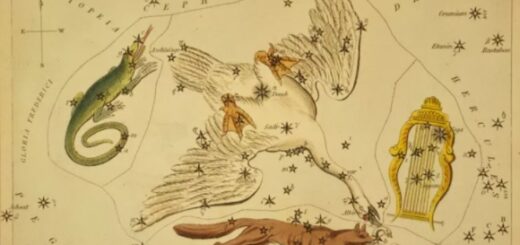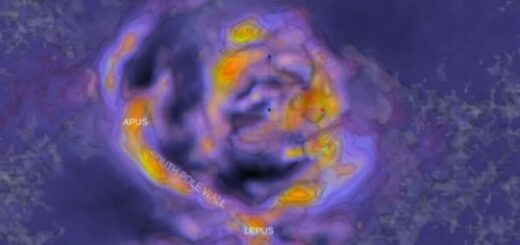Small Planet Detected About 600-Light-Years Away From Earth In Constellation Chameleon

– A small companion around the young double star CS Cha has been coincidentally detected by astronomers headed by Dutch researchers from Leiden University.
The researchers who used the SPHERE instrument on the European Very Large Telescope in Chile, suspect that it is a planet in his toddler years that is still growing.
The binary star CS Cha and his special companion are located some six hundred light years away from Earth in a star formation area in the southern constellation Chameleon.
The double star is just two to three million years young. The researchers wanted to study the star to search for a dust disc and for planets in the making.
During their research on the binary star, the astronomers saw a small dot on the edge of their images.
The researchers dived into the telescope archives and discovered the dot, but much fainter, also on 19 year old photographs taken with the Hubble Space Telescope and on 11 year old photographs of the Very Large Telescope. Thanks to the old photographs, the astronomers were able to show that the companion moves with the binary and that they belong together. What the companion looks like and how it was formed is unclear. The researchers tried to fit various models on the observations, but they do not give a hundred percent certainty. The companion may be a small brown dwarf star, but it can also be a big super-Jupiter.
‘The most exciting part is that the light of the companion is highly polarized. Such a preference in the direction of polarization usually occurs when light is scattered along the way.
We suspect that the companion is surrounded by its own dust disc. The tricky part is that the disc blocks a large part of the light and that is why we can hardly determine the mass of the companion. So it could be a brown dwarf but also a super-Jupiter in his toddler years. The classical planet-forming-models can’t help us, ‘ lead author Christian Ginski says.
In the future, the researchers want to examine the star and the companion in more detail. They want to use the international ALMA telescope on the Chajnantor plateau in the North Chilean Andes.



 Creators of mankind
Creators of mankind Description of “Tall white aliens”
Description of “Tall white aliens” Where they came from?
Where they came from? About hostile civilizations
About hostile civilizations The war for the Earth
The war for the Earth “Tall white aliens” about eternal life
“Tall white aliens” about eternal life Video: “Nordic aliens”
Video: “Nordic aliens” Aliens
Aliens Alien encounters
Alien encounters The aliens base
The aliens base UFO
UFO Technology UFO
Technology UFO Underground civilization
Underground civilization Ancient alien artifacts
Ancient alien artifacts Military and UFO
Military and UFO Mysteries and hypotheses
Mysteries and hypotheses Scientific facts
Scientific facts


















